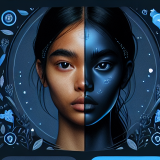
Cover Letter Mastery: The Ultimate Guide to Do's and Don'ts for Job Applications
Are you tired of sending out countless cover letters and hearing nothing back? Do you want to stand out from the competition and finally land your dream job? Look no further! In this ultimate guide to cover letter mastery, we will walk you through the do's and don'ts of crafting a stellar cover letter that will captivate employers and boost your chances of success
From the moment your cover letter lands on a recruiter's desk, you have an opportunity to make a lasting impression. But what are the key elements that make a cover letter truly stand out? How can you effectively showcase your skills and experience without sounding like every other candidate? Join us as we uncover the secrets to writing a compelling cover letter that will make recruiters sit up and take notice. We'll explore common mistakes to avoid, insightful tips for personalizing your letter, and proven strategies to make your application shine. Don't let your cover letter get lost in the sea of mediocrity. Follow our guide and master the art of crafting an irresistible cover letter that will catapult your career to new heights. The job of your dreams is just one outstanding cover letter away!

Cover Letter Mastery: The Ultimate Guide to Do's and Don'ts for Job Applications
Are you tired of sending out countless cover letters and hearing nothing back? Do you want to stand out from the competition and finally land your dream job? Look no further! In this ultimate guide to cover letter mastery, we will walk you through the do's and don'ts of crafting a stellar cover letter that will captivate employers and boost your chances of success.
From the moment your cover letter lands on a recruiter's desk, you have an opportunity to make a lasting impression. But what are the key elements that make a cover letter truly stand out? How can you effectively showcase your skills and experience without sounding like every other candidate?
Join us as we uncover the secrets to writing a compelling cover letter that will make recruiters sit up and take notice. We'll explore common mistakes to avoid, insightful tips for personalizing your letter, and proven strategies to make your application shine.
Don't let your cover letter get lost in the sea of mediocrity. Follow our guide and master the art of crafting an irresistible cover letter that will catapult your career to new heights. The job of your dreams is just one outstanding cover letter away!
The importance of a cover letter in job applications
In the digital age where job applications are often sent with a click of a button, the importance of a well-crafted cover letter cannot be overstated. It is your first opportunity to introduce yourself to potential employers and to showcase what you bring to the table. This document is often the first point of contact between you and the employer, and it can be a make-or-break factor in securing an interview.
A cover letter allows you to express your interest in the position and the company, and to highlight the skills and experiences that make you the ideal candidate. It is a platform to provide context to your CV, explaining any gaps in employment or changes in career direction. It is a chance to demonstrate your cultural fit with the company and your understanding of the role.
Remember that recruiters and hiring managers often have hundreds, if not thousands, of applications to sift through. A well-written and personalized cover letter can make your application stand out from the pile, making it more likely that you will make it through to the next stage of the recruitment process.
Common mistakes to avoid in cover letter writing
Despite its importance, many job seekers make common mistakes when writing their cover letters. One of the most frequent errors is failing to tailor the cover letter to the specific job and company. Many candidates send generic letters that could be for any job, anywhere. This is a missed opportunity to demonstrate your understanding of the role and your enthusiasm for the company.
Another common mistake is simply repeating the information on your CV. Your cover letter should complement your CV, not duplicate it. It is a chance to provide context to your experience and to explain how your skills and background make you the ideal fit for the role.
Many cover letters are also too long or too short. Ideally, a cover letter should be no more than one page in length. It should be concise and to the point, but also provide enough detail to intrigue the reader and encourage them to want to learn more about you. Too much detail can be overwhelming, while too little can leave the reader wanting more.
Key elements to include in a cover letter
There are several key elements that should be included in every cover letter to ensure it is effective and engaging. Firstly, it is crucial to address the letter to the correct person. This shows that you have taken the time to research the company and the role. If the job posting does not include a name, take the initiative to find out who the hiring manager is.
Your cover letter should also include a clear and engaging introduction that grabs the reader's attention. This could be a powerful statement about why you are interested in the role, or an interesting fact about your experience or skills.
The body of the cover letter should highlight your relevant skills and experience. Use specific examples to demonstrate how you have used these skills in the past and how they would benefit the company. Finally, end the letter with a strong closing statement that reiterates your interest in the role and the value you would bring to the company.
How to tailor your cover letter for different job positions
One size does not fit all when it comes to cover letters. It is essential to tailor your cover letter for each job application. This means researching the company and the role and demonstrating this knowledge in your letter. Show that you understand what the company does, its values, and how the role you are applying for fits into the bigger picture.
When discussing your skills and experience, focus on those that are most relevant to the job you are applying for. Use the job description as a guide and match your skills and experience to the key requirements of the role. Be sure to use the same language as the job posting to show that you are a good fit.
Finally, avoid generic phrases like "I believe I would be a good fit for this role" or "I have always wanted to work in this industry". Instead, be specific about why you are interested in the role and how your background makes you the ideal candidate.
Dos and don'ts for formatting and structure in a cover letter
When it comes to formatting and structure, there are a few key do's and don'ts to keep in mind. Do keep your cover letter to one page in length. This forces you to be concise and to focus on the most relevant information. Don't use a small font size or narrow margins to fit more on the page. This can make your cover letter hard to read and unappealing to the eye.
Do structure your cover letter in a logical and easy-to-follow format. Start with a powerful introduction, followed by a body that highlights your relevant skills and experience, and end with a strong closing statement. Don't jump around from topic to topic or include irrelevant information. This can confuse the reader and dilute your message.
Finally, do use a professional tone and language. Avoid using slang or overly complex jargon. Don't forget to proofread your cover letter for spelling and grammar errors. Even small mistakes can make you appear unprofessional and careless.
Showcasing your skills and achievements in a cover letter
Your cover letter is the perfect platform to showcase your skills and achievements. However, it's not enough to simply list them. You need to provide concrete examples of how you have used these skills in the past and how they have led to positive outcomes. This demonstrates to the reader that you can apply your skills in a practical setting and deliver results.
When discussing your achievements, be specific and quantify them where possible. Instead of saying "I improved sales", say "I increased sales by 20% over a six-month period". This provides concrete evidence of your success.
Remember, your skills and achievements are what set you apart from other candidates. Use your cover letter to highlight them and to show how they would benefit the company.
Personalizing your cover letter to stand out from the competition
In a sea of generic cover letters, personalization can make yours stand out. This means not only tailoring your cover letter to the specific job and company but also adding a personal touch. This could be a brief story about why you are interested in the company or an interesting fact about your experience or skills.
Avoid using generic phrases or clichés. Instead, use your own voice and personality to engage the reader. This not only makes your cover letter more interesting to read but also gives the employer a glimpse of who you are as a person.
Remember, employers are not just hiring a set of skills. They are hiring a person. Use your cover letter to show them who you are and why you would be a valuable addition to their team.
Proofreading and editing your cover letter for maximum impact
After you have written your cover letter, it is crucial to proofread and edit it for maximum impact. This means checking for spelling and grammar errors, ensuring the structure is logical and easy to follow, and making sure the tone and language are professional.
Don't rely on spellcheck alone. Read your cover letter out loud to catch any awkward phrases or mistakes that you may have missed. Ask a friend or family member to read it as well. They may spot errors that you have overlooked or provide valuable feedback on the content and flow.
Remember, your cover letter is a reflection of your professionalism and attention to detail. Ensure it is polished and error-free to make the best first impression.
Cover letter examples and templates for different industries
Looking for some inspiration? Here are a few cover letter examples and templates for different industries:
https://zety.com/cover-letter-templates
These examples can provide a starting point for crafting your own cover letter. However, remember to personalize and tailor your cover letter to the specific job and company. This demonstrates your understanding of the role and your enthusiasm for the company.
Conclusion: The power of a well-crafted cover letter in landing your dream job
In conclusion, a well-crafted cover letter can be a powerful tool in landing your dream job. It is your opportunity to introduce yourself to potential employers, to highlight your skills and achievements, and to demonstrate your fit with the company and the role.
By avoiding common mistakes, tailoring your cover letter to the specific job, showcasing your skills and achievements, and personalizing your cover letter, you can stand out from the competition and make a lasting impression.
Remember, the job of your dreams is just one outstanding cover letter away. So, follow these tips and master the art of cover letter writing. Happy job hunting!



